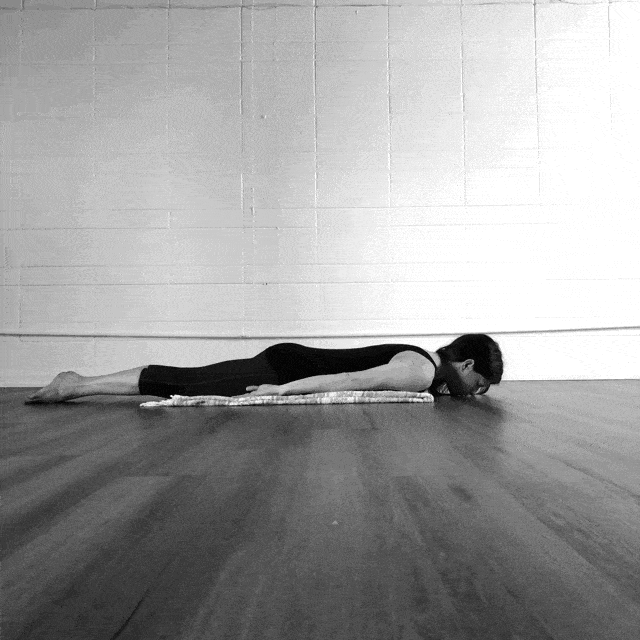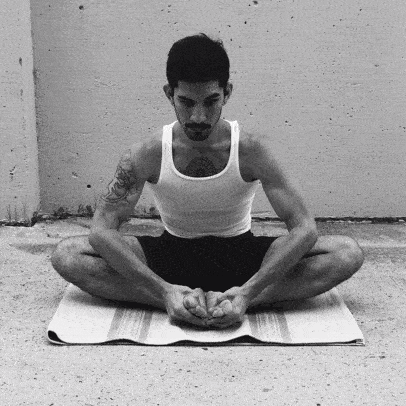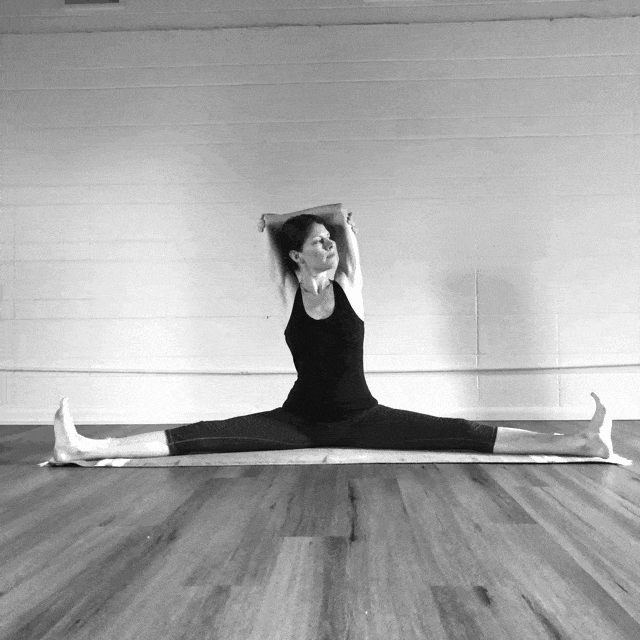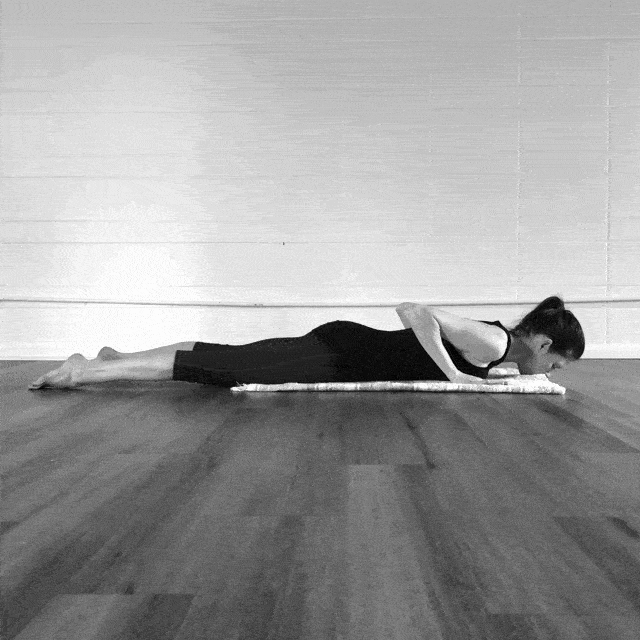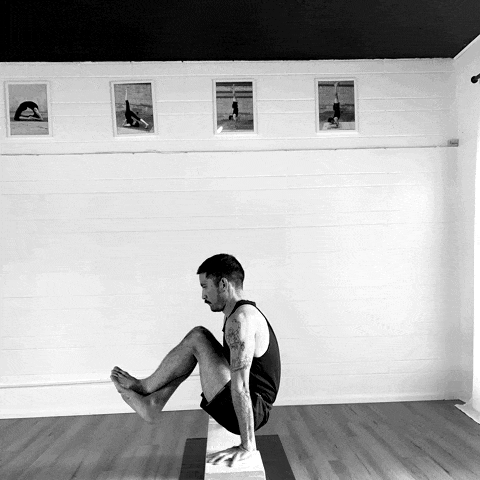Yogic Exercises for Meridian Therapy
By Angela Patriarca, LAc.
Introducing myself
Lifelong areas of study and interest
The point of inception
My teachers in dance, meditation, qigong, yoga, medicine
Areas of current interests, research and musings
Why this now?
CONTENTS
Overview
What is yoga?
What is asana?
What is Chinese Medicine?
I Ching
What are we practicing when we practice "yoga" in the west?
Bheemashakti yoga system
Developing the physical body
The 3 main tools for practice
Diagnosing and treating patients
What are yogic exercises
7 Dimensions chart
Kriyas
Breathing techniques: bhastrika and kapalabhati
Meditation
What is Meridian Therapy?
The seven emotions
How the kriyas work
Overview of the seven dimensions of the body
Compendium of yogic exercises and meridian therapy by dimension
Energetics of the spine: chakras
Energetics of the spine: kundalini
Energetics of the spine: granthis, jiaos and bandhas
Microcosmic orbit
Final thoughts
Case study
Bibliography
Overview
Yogic Exercises for Meridian Therapy
Day 1
Morning Practice: Yogic Exercises
Leg kriyas (primary/secondary openings)
Spinal twist kriyas
Backbend kriyas
Forward bend kriyas
Afternoon Module
Viewing yoga through the lens of Chinese Medicine and vice versa
What’s the point? Why this now?
What are yogic exercises? Where did they come from?
What is Meridian Therapy?
Go over morning kriyas and respective meridians
Day 2
Morning Practice: Yogic Exercises
Leg kriyas (tertiary openings)
Spinal twist kriyas
Handstand kriyas
Forearm stand kriyas
Afternoon Module
Energetics of the spine (bandhas and kundalini)
Energetics of microcosmic orbit (heart/kidney axis)
The seven dimensions
The seven chakras
Chakras and respective glands/organs/emotions
Go over morning kriyas and respective meridians
What is Yoga?
Patanjali's Yoga Sutras
(1.2) Yoga is the control (nirodhah) of the modifications (vrittis) of the mind-field (chitta)
Yoga is the ability to control all these fluctuations (vrittis) that are constantly happening in the mind and bring the mind to a perfectly stable, controlled state.
The result is the union of individual consciousness with universal consciousness
Perfect harmony of mind, body, soul and spirit
What is asana?
In Raja Yoga it is the seated position. In Hatha yoga, they found that various positions of the body stimulated and opened energy channels and psychic centers (chakras).
Physical postures
Bheemashakti Yoga System “primes” the body for postures, asana refines it
Increases quality of mundane life
Brings the unconscious into consciousness
Foundation for the exploration of body, breath, mind and higher states
What is Chinese Medicine?
Yin and Yang in balance
From the Yin and Yang come the 10,000 things
Microcosmic Orbit (Kidneys-Ren/Chong/Du)
Mind/Shen bright, emotions balanced, energy flow restored
I Ching
(1300 BC)-thought to be one of the first Chinese written classics
Must have the shadow to have the light, and the light to have the shadow
If we only focus on yang (the bright, light and energetic) and cultivate yin (the dark, heavy, and hidden), (and vice versa) we remain out of balance and disease can ensue.
Bringing yin and yang into right relationship
There is nothing in life that escapes the rules of yin and yang
Once this balance is achieved there is perfect harmony of mind, body, soul and spirit
What are we practicing when we are practicing “yoga” in the west?
The Yoga Sutras by Pantanjali - 8 Limbs
1. Yama
2. Niyama
3. Asana
4. Pranayama
5. Pratyahara
6. Dharana
7. Dhyana
8. Samadhi
Bheemashakti Yoga System
A system to prepare the body for asana
Origin story
Based in Swara Yoga- the science of breathing patterns
“Bheema”- based on one of the five pandavas named Bhim- his gift was being strong and mighty, male polarity
“Shakti”- female polarity representing energy, power and creativity
Showing us both sides (yin/yang) What we know and what we don’t know
Developing the Physical Body
Priming the “body” for asanas
“Body” means 5 koshas
In yogic terms, the body is composed of 5 layers, or sheaths, which are inseparable from one another: Annamaya (Physical), Pranamaya (Energetic/Pranic), Mannomaya (Mental/Emotional), Vijnana (Wisdom/Awareness), Anandamaya (Bliss). This means that any adjustment to the outer layer can affect the inner layers and vice versa.
The yoga practitioner aims to synchronize the harmony between these layers through regulation of body, breath, and mental focus. On the surface, this practice appears to mostly improve the physical body. However, the uniqueness of this system is that all 3 of the outermost sheaths are addressed equally and in progression with one another. One is not sacrificed for the other. As a result, the total consciousness of the body is naturally awakened.
The 3 main tools of practice
..used to develop the physical, energetic and mental bodies succinctly are kriyas, breathing and meditation practice.
Annamaya · Kriya · Physical
Pranamaya · Breathing · Energetic
Manomaya · Meditation · Mental
DIAGNOSING AND TREATING PATIENTS
If the disease lies within the physical body, heavy emphasis on kriyas for treatment.
If the disease lies within the energetic (emotional) body, heavy emphasis on breathwork.
If the disease lies within the mental body, heavy emphasis on meditation.
If we want to prevent disease, we can use this system to keep harmony and balance in all three bodies!
What are Yogic exercises?
7 dimensions of the body concept-bringing yin and yang into balance by systematically harmonizing the 7 major directions the body can open and energize.
This concept provides a complete understanding of the various “directions of opening” in the body. Each direction of opening is a pathway along which movements or postures are energized. When the direction of opening has become “energized”, strength, flexibility, and endurance are equally balanced.
7 Dimensions Chart
The 7 dimensions are based on the 7 basic postures and correlate to the 7 main chakras.
7 Basic Postures
1. Trivikramasana (Standing Side Split)
Dimension: Leg
Chakra: Muladhara
Regulates foot meridians that cross through hips/pelvis
Energizes first and second chakras
2. Uttanasana (Standing Forward Bend)
Dimension: Forward Bend
Chakra: Swadhisthana
Regulates meridians on posterior body
Energizes second and third chakras
3. Pasasana
Dimension: Spinal Twist
Chakra: Manipura
Regulates meridians on lateral body
Energizes second and third chakras
4. Anuvittasana (Standing Backbend)
Dimension: Backbend
Chakra: Anahata
Regulates meridians on the anterior body
Energizes third and fourth chakras
5. Salamba Sarvangasana (Shoulderstand)
Dimension: Shoulderstand
Chakra: Ajna
Regulates meridians on posterior body
Energizes the fifth chakra
6. Adho Mukha Vrksasana (Handstand)
Dimension: Handstand
Chakra: Vishuddha
Energizes Chong Mai
Strengthens Ren and Du Mai
Energizes the sixth chakra
7. Pincha Mayurasana (Forearm Stand)
Dimension: Forearm Stand (modified headstand)
Chakra: Sahasrara
Energizes Chong Mai
Strengthens Ren and Du Mai
Energizes seventh chakra (headstand)
When combined with backbends- energizes fourth and opens Ren Mai
Kriyas
In its purest sense, a “kriya” is something that arrives from nothing, initiates the karmic ripple effect and then dissolves back into nothing.
In this practice, it means repetitive cleansing movements.
Moving energy along pathways, squeezing/compressing energy along pathways.
Breathing techniques:
Kapalabhati and Bhastrika
Breathing techniques help regulate and store prana, energizing the whole energetic system. This complex system stores prana in the 72,000 nadis or energy channels and the 112 chakras. Pranayama is the doorway to this energy system. The most commonly used breathing techniques in the BYS method are kapalabhati and bhastrika.
Kapalabhati
Kapalabhati (literally “skull shining” breath), is a vigorous breathing technique of rapid short exhalations through the nose, using the power of the lower abdomen to expel the air. The use of kapalabhati is one of the noticeably different aspects of this system and what makes this system so effective. This breathing energizes the body much quicker than practicing without it and quickly strengthens the lower bandha system including mula bandha and uddiyana bandha. The core strategy to strengthen and open the 7 dimensions of the body is the powerful combination of kriya and kapalabhati.
Bhastrika
Bhastrika, or “bellow’s breath” is performed by using the belly as a bellows to vigorously pump the breath in and out of the nostrils. It is used to clear the channels and warm the body up before beginning the physical part of practice. Because of its invigorating and warming properties, it is very effective at increasing the body’s metabolism and reducing weight if desired. Bhastrika allows the practitioner to “shake off” or loosen areas of tightness or stress, therefore allowing the body to feel lighter and freer from obstruction.
Meditation
The concept of meditation is a continuous state of mental focus that results in clear insight into the nature of reality. It is one of the most essential yet misunderstood facets of yoga knowledge. Since meditation is often assessed through specific breathing and concentration techniques, it is important to be aware of the difference between the technique and the state of meditation itself. Meditation practice employs a variety of exercises which discipline the senses and sharpen concentration as a way to invert the practitioner's awareness and gain access to the light of pure illuminated consciousness.
The most commonly used techniques in the BYS are:
Vipassana
Om
Vipassana
Vipassana is a technique based on insight, or seeing things as they really are. It is a systematic exercise for awareness and it forms the foundation of BYS meditation practice.
Vipassana is used to gain clarity and precision through the practice of direct experiential perception. Two techniques, outer and inner, focus on developing heightened awareness and sensory observation.
The outer technique places awareness on what is perceived through the senses. The inner technique emphasizes that which can be perceived by the withdrawal of the senses. (pratyahara) The observation of breath is the passageway between the inner and outer experience.
Om Meditation
Om meditation is used to harmonize the nervous system. It is an exercise of humming achieved by the repetition of the sound OM with a closed mouth. The idea is to increase the vibration of the inner body, particularly through the upper chakras. There are various head positions and stages used to achieve greater balance of the internal systems. Master Suresh recommended this meditation for correcting major imbalances such as headaches, insomnia, high blood pressure and other treatable diseases. He also said that mental illness could be healed with Om meditation with 60% efficacy.
What is Meridian Therapy?
(based on work by Ikeda Masakazu)
Use of the meridians to diagnose and treat disease
Organ-Meridian System
Yin organs: Liver, Spleen, Kidney, Lungs and Heart
Treat the root cause of disease
Every disease begins with a deficiency in a yin organ
(except heart-if there is deficiency, there is very serious problem)
Meridian Disease
Meridian Disease: if heat or cold gets into an organ, but the organ is relatively healthy, it will push the cold/heat onto it’s paired organ’s meridian
Meridian becomes the site of the disease
ex/ Liver heat gets pushed onto the Gallbladder meridian
Organ Disease
Heat or cold gets directly into organ
Organ becomes the site of the disease
Relatively serious
Meridian Sinew Disease: treat through meridian system
The Seven Emotions
Under normal conditions, the seven emotions generally do not cause disease. However, sudden, intense or prolonged stimulation of the emotions which lie outside the normal regulatory range of physiological body function will result in disturbances to the dynamics of qi, imbalance of yin-yang, blood and the five Zang organs.
If any emotion is experienced chronically, the corresponding organ can become affected and if that organ is healthy, will push the cold/heat onto its paired meridian. That’s how the body protects itself from organ disease, which is much more serious than meridian disease.
We can use kriyas to clear out the meridians of this cold/heat and also use kriyas to regulate the meridians and therefore the organs themselves.
Joy
Can relax or relieve mental tension and stress.
Excessive joy impairs the heart, causing it to become sluggish.
When pathological, there can be palpitations, insomnia, mental confusion and forgetfulness. More serious cases manifest as mental disorders and mania.
Anger
Prolonged anger that goes unexpressed can turn into blood stasis, since this is where the blood is stored
Can also cause qi to rise and move upwards adversely, with the blood following.
WORRY AND ANXIETY
Excessive worry causes qi stagnation and blockage.
When the spleen qi stagnates, it consumes the heart blood.
Prolonged anxiety disrupts the spleen's ability to transform and transport.
This causes digestive disorders.
Sadness or Grief
Prolonged sadness or grief consumes qi.
This impairs the lung’s ability to disperse and descend.
Fear and Fright
Chronic fear sinks the qi.
This affects the contractive ability of the kidneys to hold things in.
Fright scatters the qi.
Intense fright impairs the heart and unsettles the shen/spirit.
How the kriyas work
In general the side of the body that is being stretched, is being sedated/dispersed/shunted
The side of the body being contracted is being tonified
The 7 Dimensions of the Body Practice
Warm up Routine- activates Ren mai, Du mai, Chong mai and Kidney meridian
Bhastrika- dries damp/phlegm accumulation and activates Dai Mai and Microcosmic Orbit
Energizes and aligns the 7 chakras
Meditation- sedates the mind/calms shen
Compendium of yogic exercises and meridian therapy by dimension
लँ
Standing Splits Dimension
Chakra: Muladhara
Location: Du 3 (L4/L5), Ren 1
Associated bandha: Moola bandha
Organs: Spine, Kidneys, Urinary Bladder, Large Intestine
Yin/Yang meridians: Kidney/Urinary Bladder
Gland: No gland, however, according to yogic philosophy, the perineal body is a vestige of a gland which has atrophied over human evolution and can be reactivated by the practice of moola bandha. Stimulates the gonads in both sexes.
Some say adrenals.
Nerve Plexus: Sacral plexus (innervates lower limbs)
Element: Water/Fear
Musculoskeletal: Psoas, iliacus, gastrocnemius, soleus, foot muscle
Single Leg Kriya: 3 Arm Yin/3 Arm Yang, Gallbladder, Liver, Spleen
Double Leg Kriya: Bladder, Kidney, Liver
Baddha Konasana: Gallbladder, Kidney, Liver, Spleen
Leg Extension A: 3 Arm Yin/3 Arm Yang, Bladder, Gallbladder, Kidney, Liver, Spleen
Leg Extension B: 3 Arm Yin/3 Arm Yang, Bladder, Gallbladder
Leg Extension C: Bladder, Gallbladder
Standing Balance: Bladder, Kidney, Liver, Spleen
Hanumanasana: Bladder, Stomach
Samakonasa: Kidney, Liver, Spleen
Samakonasa Kriya: 3 Arm Yin/3 Arm Yang, Bladder, Gallbladder, Kidney, Liver, Spleen
Lotus: Gallbladder, Kidney, Liver, Spleen
वँ
Forward Bend Dimension
Chakra: Swadhisthana
Location: Du 4 (L4/5), Ren 3-8
Associated bandha: Moola bandha
Organs: Organs of reproduction
Yin/Yang meridians: Spleen/Stomach
Glands: Ovaries, testes, adrenals
Nerve plexus: Lumbar plexus (innervates pelvic girdle and lower limbs)
Element: Earth/Worry
Musculoskeletal: Hamstrings
Activated Child's Pose: Kidney, Energizes Microcosmic Orbit
Forward Bend Kriya: Bladder
Forward Bend Routine: Bladder, Gallbladder
Prasarita Padottanasana: Bladder
Leg Behind the Head: Bladder, Gallbladder
र
Spinal Twist Dimension
Chakra: Manipura
Location: Du 6/7 (T10-12), Ren 12
Associated bandha: Uddiyana
Organs: Liver, Spleen, Stomach, Gallbladder
Yin/Yang meridians: Spleen/Stomach/Liver
Gland: Pancreas
Nerve plexus: Lumbar plexus (innervates pelvic girdle and lower limbs)
Element: Earth/Worry
Musculoskeletal: Abdominals, quadriceps
Ardha Matsyendrasana: Gallbladder
Bharadvajasana: Gallbladder, Stomach/Spleen
Standing Twist: Gallbladder
Parivrtta Utkatasana: Gallbladder
य
Backbend Dimension
Chakra: Anahata
Location: Du 14 (T5/6), Ren 17
Associated bandha: Uddiyana
Organs: Heart, Lungs
Gland: Thymus
Yin/Yang meridians: Heart/Small Intestine
Nerve plexus: Brachial plexus (innervates pectoral girdle and upper limbs)
Element: Fire/Joy
Musculoskeletal: Erector spinae
Standing Backbends: 3 Arm Yin, Kidney, Spleen, Stomach
Ustrasana: 3 Arm Yin, Kidney, Spleen, Stomach, Small Intestine
Laghuvajrasana: 3 Arm Yin, Kidney, Spleen, Stomach, Small Intestine
Kapotasana: 3 Arm Yang, Kidney, Spleen, Stomach, Small Intestine
Cobra: 3 Arm Yin, Kidney, Spleen, Stomach, Small Intestine
Shalabasana: 3 Arm Yin, Kidney, Spleen, Stomach, Small Intestine
Dhanurasana: 3 Arm Yin, Kidney, Spleen, Stomach, Small Intestine
Supta Virasana: Kidney, Spleen, Stomach, Small Intestine
Bridge: Large Intestine, Lung, Stomach, Small Intestine
Wheel: 3 Arm Yang, Kidney, Pericardium, Spleen, Stomach, Small Intestine
Locust: 3 Arm Yin, Spleen, Stomach, Small Intestine
हँ
Shoulder Stand Dimension
Chakra: Vishuddha
Location: Du 14 (C7/T1), Ren 22
Associated bandha: Jalandhara
Organs: Lungs/Large Intestine (via the vagus nerve)
Gland: Thyroid
Yin/Yang meridians: Lung/Large Intestine
Nerve plexus: Brachial plexus (innervates pectoral girdle and upper limbs)
Element: Metal/Sadness and Grief
Musculoskeletal: Pectorals, triceps, forearms, latissimus dorsi
Shoulder Stand Routine: Bladder
उँ
Handstand Dimension
Chakra: Ajna
Location: Du 15 (below C2 atlas/axis), yin tang
Associated bandha: Jalandhara
Organs: Left brain, lower brain, ears, nose, left eye
Gland: Pituitary, pineal glands (thalamus, hypothalamus)
Yin/Yang meridians: Liver/Gallbladder
Nerve plexus: Cervical plexus (innervates muscles of neck and diaphragm)
Element: Wood/Anger
Musculoskeletal: Anterior and posterior neck muscles
Downdog presses: Bladder, Heart, Small Intestine
1st Stage Handstand: Energizes Microcosmic Orbit/Activates Sushumna
2nd Stage Handstand: Energizes Microcosmic Orbit/Activates Sushumna, Energizes Microcosmic Orbit/Activates Sushumna
3rd Stage Handstand: Energizes Microcosmic Orbit/Activates Sushumna
ॐ
Forearm Stand Dimension (Headstand)
Chakra: Sahasrara
Location: Du 20/ Du 16 (below C1 Atlas/occiput)
Associated bandha: None-not on spine
Organs: Right brain, upper brain, right eye
Gland: Pineal gland
Yin/Yang meridians: Pericardium/San Jiao
Nerve plexus: None-not on spine
Element/Emotion: Fire/Fright
Musculoskeletal: Facial muscles, trapezius, supraspinatus
Dolphin Presses
Inverted Dolphin at Wall: Heart, Small Intestine
Dolphin Kick ups: Energizes Microcosmic Orbit/Activates Sushumna
Energetics of the Spine
Chakras
“A chakra is a center where nadis meet like the spokes of a chariot wheel.” Mandukya Upandishad 2:6
“The chakras are whirling vortices of energy which exist in the pranic (etheric) body of man at the linking points between the body and the mind. They occur at the intersection of ida and pingala in sushumna, being psychosomatic points, where mind and body touch.” Saraswati, Swami Satyananda Moola Bandha The Master Key
They have a yin and yang aspect (anterior/posterior) (Ren/Du)
They have corresponding acupoints on the Ren and Du
Can use the acupoints to treat chakras that are imbalanced.
How do we know if the chakras are imbalanced?
On a gross level, we can diagnose using the 7 basic postures
Confirm with organ/meridian diagnosis (abdominal diagnosis, pulse, tongue, meridian palpation etc)
Can further confirm with pendulum if not clear
How to balance out chakras
Use yogic exercises in corresponding dimension if its a meridian/organ issue
Use acupoints to further regulate imbalanced chakra/chakras
Use extra breathing exercises if emotional issue
Use meditation if mental body is heavily a part of the issue
Kundalini
Derived from two Sanskrit words “kundala” (coiled) and “kunda”(pit)
Coiled snake that lays dormant until activated in the mooladhara
The mind awakens/is illuminated as the kundalini rises through the spinal cord
It ascends along the sushumna to the brain (Du to the brain) and works on the chakras at the psychophysiological level
In order for the kundalini to rise to its final destination (sahasrara chakra/Du 20), it must pierce through three major granthis (psychic knots)
Bandhas and Granthis
(from Moola Bandha The Master Key by Swami Satyananda Saraswati)
“…three bandhas act directly on the three granthis or psychic knots. Moola bandha is associated with brahma granthi, uddiyana bandha with vishnu granthi and jalandhara bandha with rudra granthi. The granthis prevent the free flow of prana along sushumna nadi and thus impede the awakening of the chakras and the rising of kundalini.”
“Brahma granthi is the first knot and it is associated with mooladhara and swadhisthana chakras. It is linked with the survival instinct, the urge to procreate and with deep, instinctive knowledge, awareness and desire. When brahma granthi is transcended, the kundalini or primal energy is able to rise beyond mooladhara and swadhisthana without being pulled back down by the attractions and instinctual patterns of the personality.”
“The second knot is vishnu granthi, associated with manipura and anahata chakras. These two chakras deal with the sustenance of the physical, emotional and mental aspects of human existence. Manipura sustains pranamaya kosha , the energy body, governing the digestion and metabolism of food. Anahata sustains manomaya kosha , the mental body, and they both affect annamaya kosha , the physical body. Once vishnu granthi is transcended, one is no longer bound by physical, mental and emotional attachments. Relationships and energy become more universal, rather than being limited by personal preferences or aversions.”
“The final knot is rudra granthi, which is associated with vishuddhi and ajna chakras. Vishuddhi and ajna sustain vijnanamaya kosha , the intuitive or higher mental body, and represent the transformation of an existing form, idea or concept into its universal aspect. When rudra granthi is pierced, individuality is dropped. The old ego identification is left behind and the experience of unmanifest consciousness, beyond the phenomenal universe, emerges at ajna and sahasrara chakras.”
So…
The first and second chakras deal with survival, procreation and our personality. This means, splits, lotus, leg behind the head and forward bends can be used to transcend our primal desires and the ingrained patterns of our personality.
Kidneys, urinary bladder, large intestine, reproductive organs
The third and fourth chakras deal with the physical, emotional and mental aspects of human existence. This means, spinal twists and backbending can be used to become free of physical, mental and emotional attachments.
Spleen, stomach, liver, gallbladder, heart, small intestine, lungs
The fifth, sixth and seventh chakras deal with the higher mental body. This means, shoulder stands, handstands and forearm stands aid in egoic states of attachment and “yoga” is attained.
Microcosmic Orbit
Chong mai: Sea of Blood
Our destiny, our curriculum, our ancestry, our personality
Ren mai: Sea of Yin
Vessel of bonding, maternal archetype, how we self care and self love, how we are in relationship to others
Du mai: Sea of Yang
Allows for individuation, mediates one’s exploration in the world, sense of home and support, allows for the realization of one’s needs and demands others recognize these needs as well
Dai mai: Vessel of Latency
Responsible for absorbing excess from post-natal environment, stores this excess at the level of jing, deals with “violations” one has dealt with in life and corresponding emotions, holds onto these life/emotional issues until one is strong enough to deal with them, can greatly compromise one’s ability to create what they want in their life
How does the energy flow?
The power of the spine in physical yoga practice
Most important aspect of the physical postures
Bandhas and their effect on the spine
Why?
Case Study
final thoughts
We have the capacity to heal through the study and practice of yoga,
Yes, and…
It doesn’t work unless you do it
“The only way to understand Bheemashakti Yoga is to have a direct experience with it.”
There are some exceptions to this rule
Depends on the consciousness of the student
How far into pathology and disease one has gone-can use the “Om Meditation” to bring pathologies towards a more healthy state
Next Course:
A closer look at…
Bandhas and their effect on the endocrine and nervous systems
Yoga for women’s health
Moon cycle practices
Yogic exercises for the 8 Extraordinary Vessels
Bibliography
Chase, Christopher R. “The Geometry of Emotions: Using Chakra Acupuncture and 5-Phase Theory to Describe Personality Archetypes for Clinical Use.” Medical Acupuncture, Mary Ann Liebert, Inc., 1 Aug. 2018, https://www.ncbi.nlm.nih.gov/pmc/articles/PMC6106753/.
Saraswati, Satyananda. Asana Pranayama Mudra Bandha. Yoga Publications Trust, 2013.
Buddhananda, and Satyananda Saraswati. Moola Bandha: The Master Key. Yoga Publications Trust, 2013.
Microcosmic Orbit diagram adapted from The Complete System of Self Healing: Internal Exercise, by Dr. Stephen T. Chang. San Francisco: Tao Publishing 1986, p. 200.
Ikeda, Masakazu. The Practice of Japanese Acupuncture and Moxibustion: Classic Principles in Action. Eastland Press, 2005.
Credits
Course: Angela Patriarca, LAc.
Design: Sumeet Banerji, Mushroom Books









